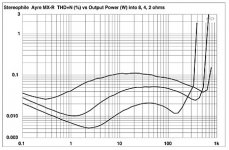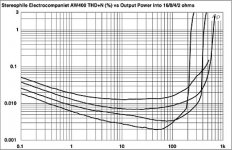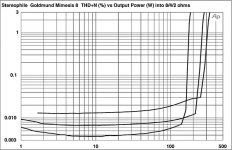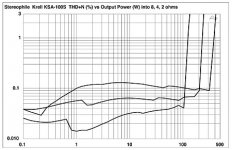If he doesn't, I do (that's the scope I use).
Our's are under an order of "do not repair". ISO rules make us have them repaired by the manu. and there's something like a $3000 min. (has to do with that "analog" stuff).

...
Aren't we all.
Actually, I don't think I'm obssessed. My life is far too varied and colorful to allow for any obssession regarding anything, not time to be obssessed.
Not infrequently, obssessed also means possessed ... 😀
Kudos on the kitchen utensils, though. Also my weak spot, I avoid shops selling the stuff because I know that if I go in, I'll be spending money.
D V V brought up magnetic amps .
I wanted to get one made for a project at work . The usually obliging transformer manufacturer ran a mile . Anyone ever heard one ?
http://www.aes.org/aeshc/pdf/how.the.aes.began/vincent_magnetic-audio-fundamentals.pdf
That's true, I did. For a split second there, I forgot the old programming line in Basic:
If magnetic and Nigel,
then Hawksford.
😀 😀 😀
Perhaps germane regarding advanced degrees: http://www.nature.com/nature/journal/v485/n7396/full/485041b.html
At present, I find it grounded by practice to use only RF transistors at the output stage.
Such an approach sounds as a nonsense for those who designs for manufacturing companies, but among DIYers we concluded, that NFB designs definitely benefit from RF transistors at output stage, their sound comes close to that from NoNFB designs, with additional pluses remaining at the bottom end.
What do you consider to be "RF"?
Our's are under an order of "do not repair". ISO rules make us have them repaired by the manu. and there's something like a $3000 min. (has to do with that "analog" stuff).
How old of scopes does Tek still support?
dvv, thanks for your active position in this discussion, but, at analogy with one saying, "chair" designers will never find common position with "practice" designers. I belong to the last group, since for me it became obvious quite a long time ago - models are still very far from reality in the field of audio. Designing audio is much more tricky and less grounded by "theory" than designing instrumentation and control equipment.
Open Loop Bandwidth and quality of parts used (especially capacitors) are of the major importance. Hope the efforts of John Curl will bring something new upon the table.
If finding of proper parts really matters to you, I could try to send you some laterals, we have them supplied mainly from Singapore (almost sure not fake).
Thank you for your kind offer, Владимир, if push comes to shove, I may have to ask you for that favor, but it's too early to tell.
You see, my inital idea was to develop the amp primarily for my own self, but at the same time, to make it with parts which are not a problem to find, so that when I post it locally, local DIY people don't have to go around wondering how to get hold of some, to us, exotic parts.
I'm already over that line, having used BF 720/721, which not available locally, but my redeeming value is that Farnell has them on stock at all times, AND the Siemens version, which is the best of them all. Since most local suppliers work with Farnell, local ordering is possible.
I wonder, could you give a few examples of what you consider RF transistors suitable for audio power output use? Or did I get something criss-crossed?
Wow
That's as near a Knighthood as I will ever get . Thanks .
Nige
That's true, I did. For a split second there, I forgot the old programming line in Basic:
If magnetic and Nigel,
then Hawksford.
😀 😀 😀
That's as near a Knighthood as I will ever get . Thanks .
Nige
A/B Tests
I was told that if during A/B comparisons A followed by A as a control , people heard the repeat as brighter . It was suggested that the ear / brain learns then listens more carefully hearing extra information . Has anyone a link to that ? If true it is important . This wasn't to trick people . Just to know if A/B is truly a test of comparisons . It shows a weakness in null tests if so .
I was told that if during A/B comparisons A followed by A as a control , people heard the repeat as brighter . It was suggested that the ear / brain learns then listens more carefully hearing extra information . Has anyone a link to that ? If true it is important . This wasn't to trick people . Just to know if A/B is truly a test of comparisons . It shows a weakness in null tests if so .
AND the Siemens version
Unfortunately, Siemens hasn't done semi's in a dozen years, and Infineon does not manufacture them.
NXP still has the Philips BF720/721 versions on active duty, afaig.
Unfortunately, Siemens hasn't done semi's in a dozen years, and Infineon does not manufacture them.
NXP still has the Philips BF720/721 versions on active duty, afaig.
That works for me. The only version of those transistors which were a bit odd were by Zetex, they gave me a hard time, I think their output capacitance was quite bit above what they say and what's in the Data Sheet, but who cares, I got rid of them.
Well a bit on topic is how to measure amplifier distortion below the noise floor. Although you can try and average out the noise, you might loose something. (I don't want to get into sampling theory and finite limits so a bit of simplification).
A better technique is to use two identical amplifiers and measure their outputs and then do a cross correlation. Now you can do lots of averages this way and get to what is actually the distortion or other artifacts common to the design and reduce the noise errors.
But then I am giving away secrets on another project!
A better technique is to use two identical amplifiers and measure their outputs and then do a cross correlation. Now you can do lots of averages this way and get to what is actually the distortion or other artifacts common to the design and reduce the noise errors.
But then I am giving away secrets on another project!
Last edited:
Noise flloor distortion
Spray locally with liquid nitrogen would be invalid ? Assuming DC conditions don't change .
I have often thought of it as I have access to it . I could never imagine where it could be used .
Spray locally with liquid nitrogen would be invalid ? Assuming DC conditions don't change .
I have often thought of it as I have access to it . I could never imagine where it could be used .
Last edited:
Spray locally with liquid nitrogen would be invalid ? Assuming DC conditions don't change .
I have often thought of it as I have access to it . I could never imagine where it could be used .
Well you could try to start drinking cold beer. 🙂
Interesting List, The first i agree with , especially after having much of those at one time or the other ..
🙂
The Ten Most Significant Amplifiers of All Time | AVguide
🙂
The Ten Most Significant Amplifiers of All Time | AVguide
Interesting List, The first i agree with , especially after having much of those at one time or the other ..
🙂
The Ten Most Significant Amplifiers of All Time | AVguide
I would question only the Phase Linear amp. I agree it made NOMINAL (but not real) power affordable, and that is its only clame to fame. In terms of sound, the instant the load dropped to 7.9 Ohms, it was in trouble. And I found its sound to be so-so at best.
Carver could do much, MUCH better, and did, later on. I never doubted his savvy, just his financial motives.
Instead of it, I'd include Harman/Kardon's Citation XII on the list. It must rate as one of the most copied amps in the world ever, and even many years after its demise, people like Nelson Pass were tuning them up with MOSFET output devices and so forth.
Also, I note that their Citation XX, the most elusive power amplifier of them all, is missing from the list. Not many were produced which could deliver 500 Amps of current, even if in impulses only. And with so little overall NFB. Anyone who thinks that's no big deal and is irrelevant, please feel free to show us your construction bettering it.
Well you could try to start drinking cold beer. 🙂
Yeah, your slew rate improves no end. 😀
Well a bit on topic is how to measure amplifier distortion below the noise floor. Although you can try and average out the noise, you might loose something. (I don't want to get into sampling theory and finite limits so a bit of simplification).
A better technique is to use two identical amplifiers and measure their outputs and then do a cross correlation. Now you can do lots of averages this way and get to what is actually the distortion or other artifacts common to the design and reduce the noise errors.
But then I am giving away secrets on another project!
I doubt that the distortion characteristics at that low a level correlate that well. I would prefer 4 million point FFT's.
I doubt that the distortion characteristics at that low a level correlate that well. I would prefer 4 million point FFT's.
I stole the technique from NIST! They used it to measure better than -200 db re 1 V! (100,000 averages.)
- Status
- Not open for further replies.
- Home
- Member Areas
- The Lounge
- Sound Quality Vs. Measurements



